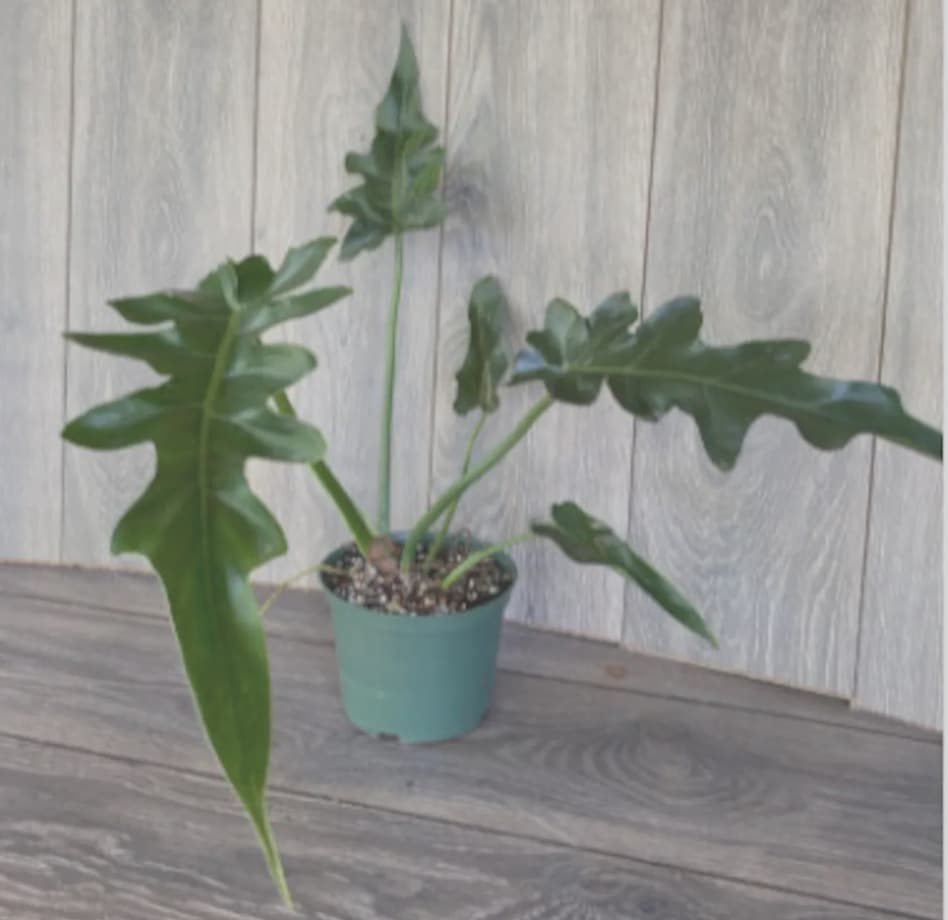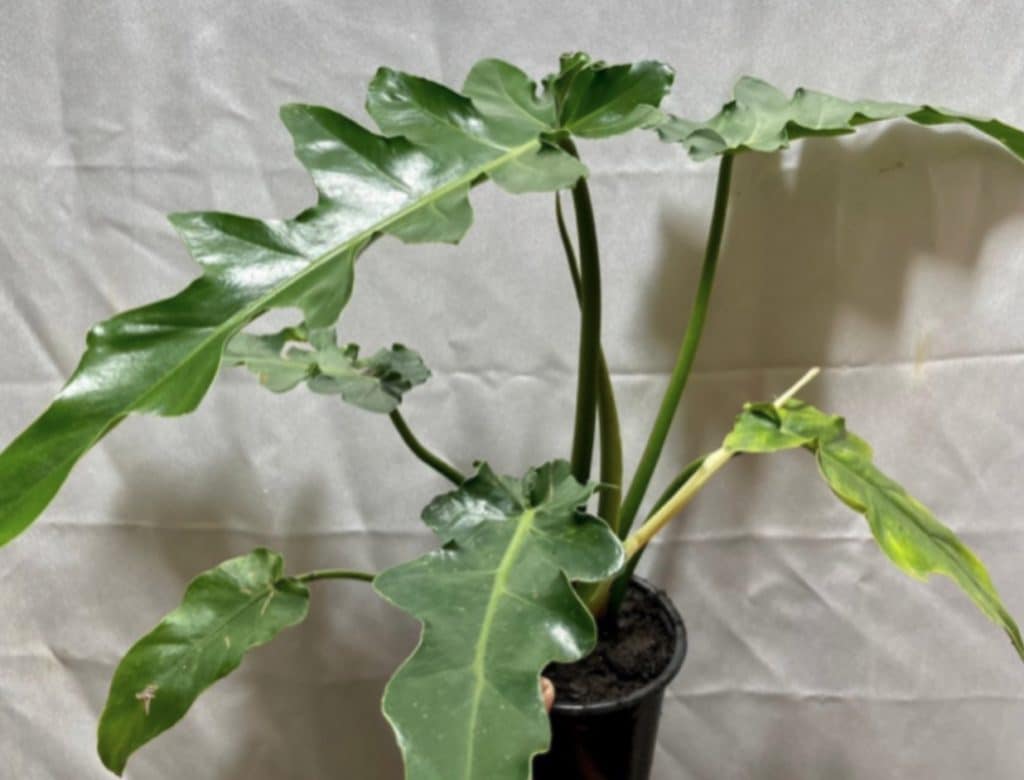The Philodendron Bob Cee is a rare tropical plant that has long, narrow leaves. These plants can grow very large and are happy climbing up a moss pole. As the Bob Cee is a rare variety of Philodendron that’s highly sought after, it can be hard to source. The plants are loved for their large serrated leaves, which look stunning the larger they grow.
The Philodendron Bob Cee is relatively easy to care for. It’s commonly grown as a houseplant and can also be planted outdoors in USDA zones 9b to 11. Let’s look at how to grow and care for a Philodendron Bob Cee.
What is a Philodendron Bob Cee?
The Philodendron Bob Cee is a member of the Araceae family. This impressive plant is fast-growing and can climb up a totem or fence. It has areal roots, which it uses to grip onto trees in its native environment. Like all philodendrons, the Bob Cee originates from tropical and subtropical regions of South America.
A large Bob See with saw-toothed leaves is an impressive sight. This plant can grow quite large in the right conditions, and its leaves can grow up to four feet in length. The foliage has lovely rounded saw-tooth edges and light green to cream color veins.
Like all philodendrons, the Bob Cee plant is toxic to humans and animals if ingested. It can also cause skin irritation due to crystals that form on the surface of the leaves. Keep your plant out of the reach of young children, cats, and dogs. It’s also wise to wear gloves when handling any type of philodendron.
How to Care for a Philodendron Bob Cee
Philodendron Bob See is easy to care for plants that don’t require much care. They can be grown indoors and outside and have very similar care requirements to other types of philodendrons. These plants can be grown in pots with a pole for support, in a hanging basket that allows its vines to trail, or outdoors in a flower bed with a fence to climb. Here are some tips to help you grow a thriving Bob See plant:
Sunlight Needs
The Philodendron Bob Cee grows best in medium to bright indirect sunlight. In the rainforests of Brazil, philodendrons are climbing plants that are over shaded by larger trees. These plants shouldn’t be left in the full sun as they need dabbled light or partial shade. Too much sun will burn your plant’s leaves, so place your plant in a spot away from the window when being grown indoors.
Outside plants need between 70 to 85% sunlight, and filtered sun is best. In cooler growth zones, Bob See plants should be moved to a warmer location in the fall. These plants aren’t very cold tolerant and can be killed by frost. In zone 4b to 11, Bob Cee plants can be grown on a patio as long as they are moved inside in the fall.
Watering Requirements
Philodendron Bob Cee plants like moist soil but can be left to dry out slightly. Wait until the top two inches of soil have dried before watering your plant. This will prevent waterlogging, which can lead to root rot.
Soil
Philodendron Bob See plants thrive in soil that’s rich and well-drained. The soil should be able to maintain its moisture without becoming waterlogged. You can add some rich organic matter to your soil mix so that your plant gets the required nutrients. It’s best to avoid wet, compact soil or dry, sandy soils. You can also provide your plant with a mossy pole to climb.
Temperature
Philodendron Bob Cee plants thrive when the indoor temperature is between 55° and 80°F. They don’t like the cold and shouldn’t be left in a draft.
Fertilizer
You can provide your Philodendron Bob cee with a liquid fertilizer once a month. Mix the fertilizer at the correct ratio and apply at least 6 inches away from the plant’s base. If you’re using a slow-release product, you’ll only need to fertilize your plant two or three times annually.
Humidity
As Philodendrons are tropical plants, they require humidity of between 50 to 80%. This can be achieved by daily misting, placing your plants close together, leaving your plant in the bathroom, or investing in a humidifier. Here’s our full guide to
Conclusion
Philodendron Bob Cee are beautiful plants with large serrated leaves. They look great grown outdoors, in a hanging basket, or can be kept as a house plant. This species requires similar care to other varieties in the Araceae family.
Related:

